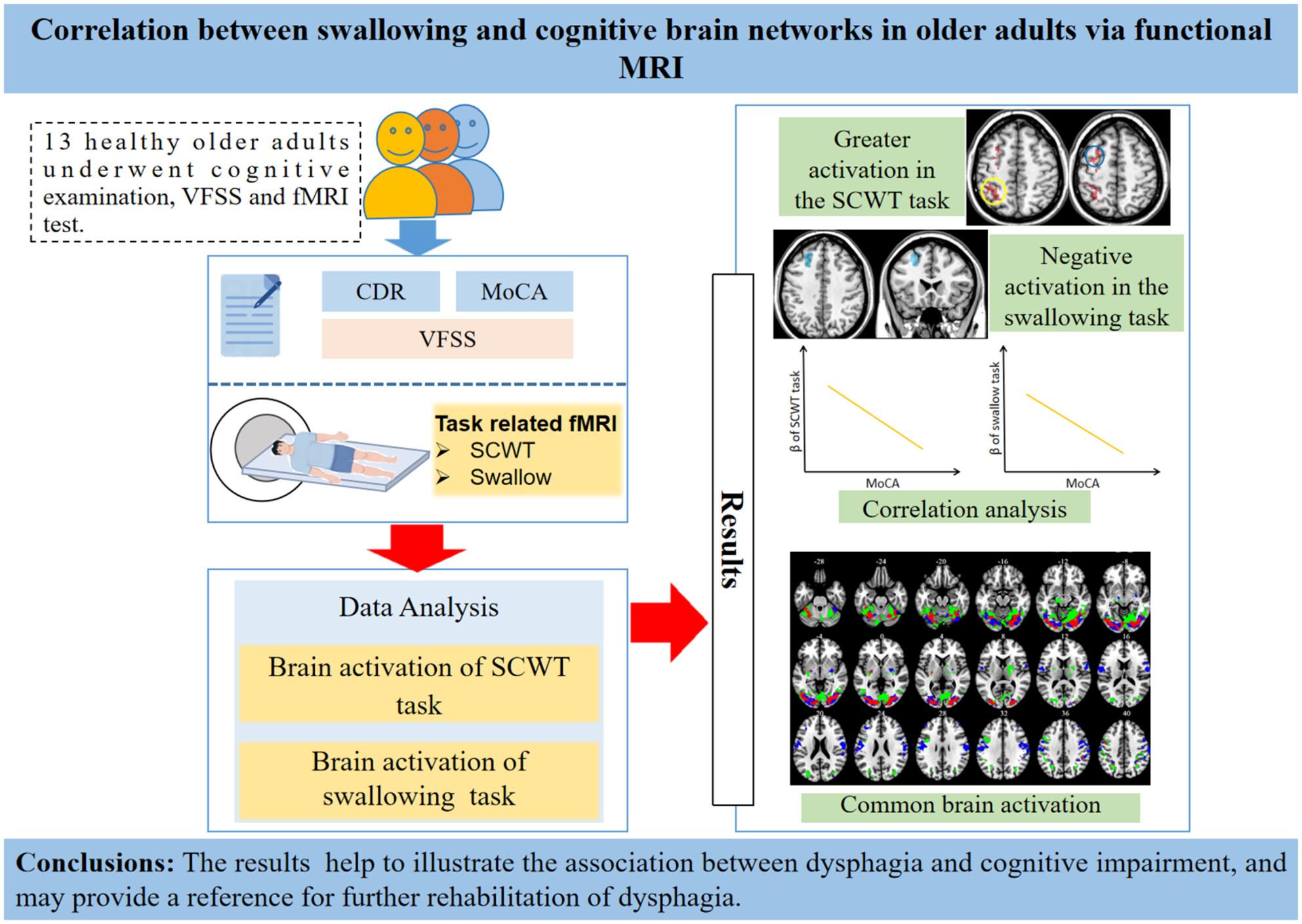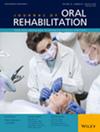Correlation Between Swallowing and Cognitive Brain Networks in Older Adults via Functional MRI
Abstract
Background
Clinical evidence supports that swallowing function is correlated with cognition, but the neurobiological mechanism associated with cognitive impairment and dysphagia remains unclear.
Objectives
To compare the brain activation patterns of the swallowing and the cognitive tasks and explore neural associations between swallowing and cognitive function via task-related functional magnetic resonance imaging (fMRI).
Methods
A total of 13 healthy older adults (aged > 60 years) were recruited. Participants underwent the clinical dementia rating (CDR) test and the Montreal Cognitive Assessment (MoCA). A block-designed task-related fMRI study was conducted where each participant completed both swallowing and cognitive tasks within a single session. During the swallowing task, participants swallowed 2 mL of thickened water, while the Stroop Colour Word Test (SCWT) served as the cognitive task. First-level analysis of swallowing time-series images utilised the general linear model (GLM) with Statistical Parametric Mapping (SPM), applying a voxel threshold of p < 0.001 for significance. Common activations in brain regions during swallowing and cognitive tasks were extracted at the group level, with significance set at p < 0.05, corrected for multiple comparisons using the false discovery rate (FDR), with a minimum cluster size of 20 voxels. Correlation analysis between behavioural measurements and imaging signals was also conducted.
Results
Some regions were commonly activated in both task networks; these regions were the bilateral occipital lobe, cerebellum, lingual gyrus, fusiform, middle frontal gyrus, precentral and postcentral gyrus, right supramarginal and inferior parietal lobe. Most importantly, the average beta value of cognitive and swallowing tasks in these areas are both significantly negative related to the MoCA score. Furthermore, opposite signal changes were seen in the bilateral prefrontal lobes during the swallowing task, while positive activation in the bilateral prefrontal lobes was observed during the SCWT. Postcentral gyrus activation was more extensive than precentral gyrus activation in the swallowing task.
Conclusion
The common activation of swallowing and cognitive tasks had multiple foci. The activity of cognitive and swallowing task in these areas is significantly negative correlated with the MoCA score. These findings may help to illustrate the association between dysphagia and cognitive impairment due to the common brain regions involved in cognition and swallowing and may provide a reference for further rehabilitation of dysphagia.
Trial Registration
Clinical Trial: (Chinese Clinical Trial Registry): ChiCTR1900021795


 求助内容:
求助内容: 应助结果提醒方式:
应助结果提醒方式:


